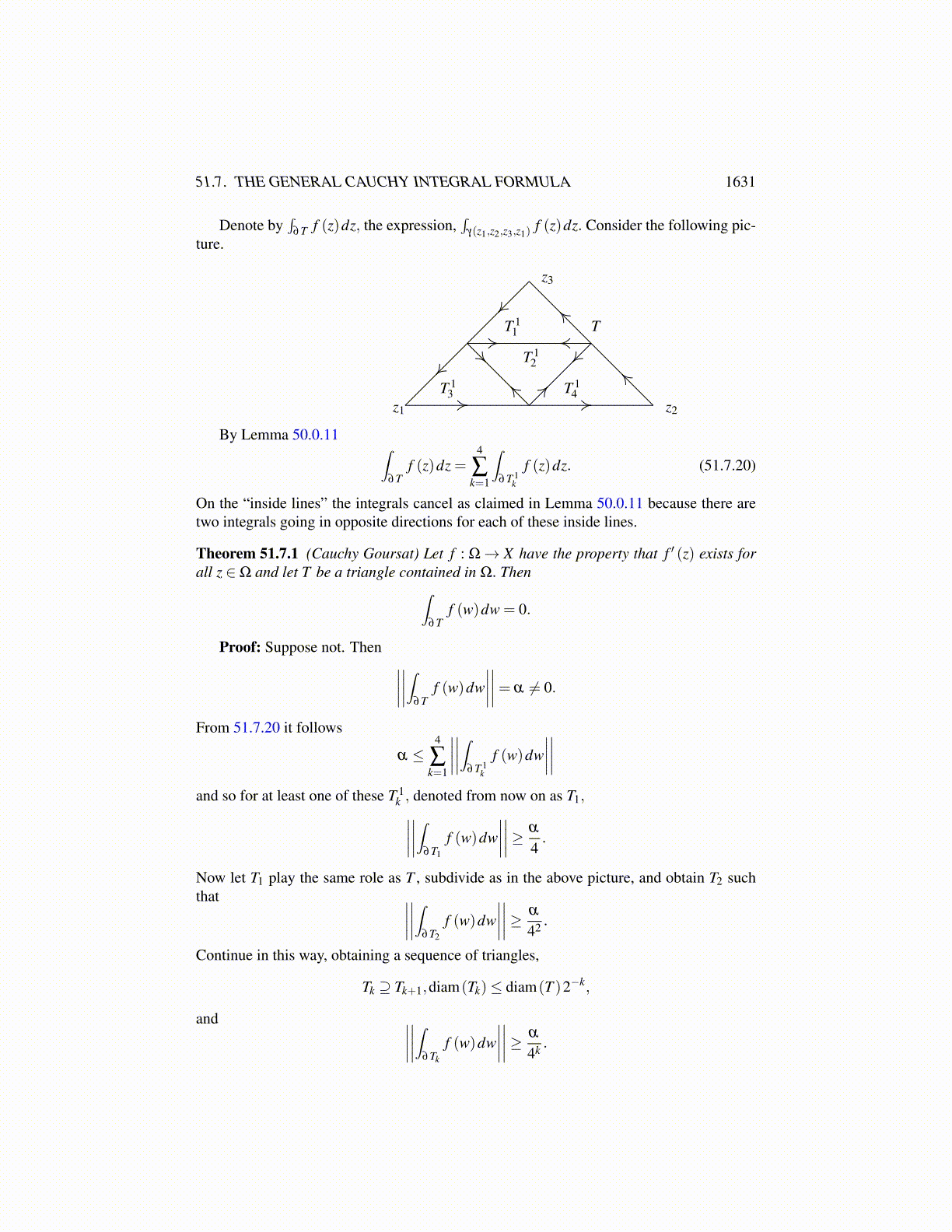
51.6. LIOUVILLE’S THEOREM 1631
Note how radically different this is from the theory of functions of a real variable.Consider, for example the function
f (x)≡{
x2 sin( 1
x
)if x ̸= 0
0 if x = 0
which has a derivative for all x ∈ R and for which 0 is a limit point of the set, Z, eventhough f is not identically equal to zero.
Here is a very important application called Euler’s formula. Recall that
ez ≡ ex (cos(y)+ isin(y)) (51.5.19)
Is it also true that ez = ∑∞k=0
zk
k! ?
Theorem 51.5.4 (Euler’s Formula) Let z = x+ iy. Then
ez =∞
∑k=0
zk
k!.
Proof: It was already observed that ez given by 51.5.19 is analytic. So is exp(z) ≡∑
∞k=0
zk
k! . In fact the power series converges for all z ∈ C. Furthermore the two functions,ez and exp(z) agree on the real line which is a set which contains a limit point. Therefore,they agree for all values of z ∈ C.
This formula shows the famous two identities,
eiπ =−1 and e2πi = 1.
51.6 Liouville’s TheoremThe following theorem pertains to functions which are analytic on all of C, “entire” func-tions.
Definition 51.6.1 A function, f :C→ C or more generally, f :C→ X is entire means it isanalytic on C.
Theorem 51.6.2 (Liouville’s theorem) If f is a bounded entire function having values inX , then f is a constant.
Proof: Since f is entire, pick any z ∈ C and write
f ′ (z) =1
2πi
∫γR
f (w)
(w− z)2 dw
where γR (t) = z+Reit for t ∈ [0,2π] . Therefore,
∣∣∣∣ f ′ (z)∣∣∣∣≤C1R